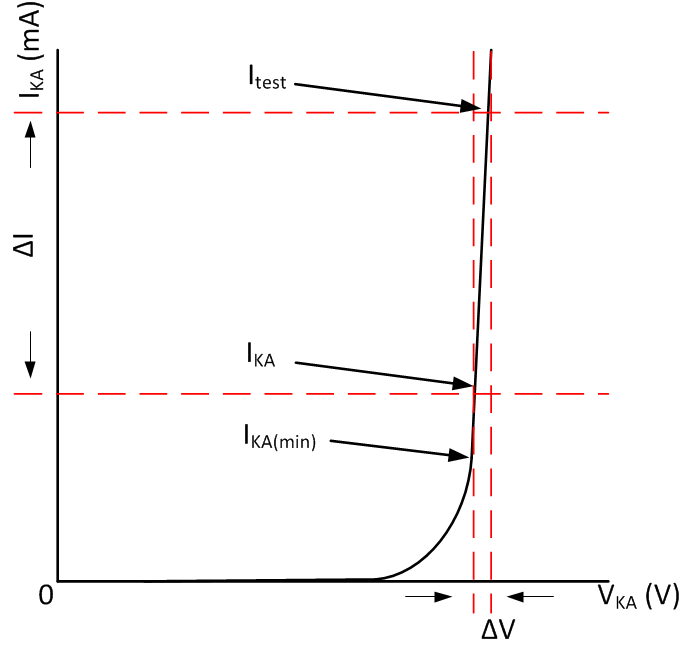SLVSDQ6A July 2018 – November 2018 TL431LI , TL432LI
PRODUCTION DATA.
- 1 Features
- 2 Applications
- 3 Description
- 4 Revision History
- 5 Device Comparison Table
- 6 Pin Configuration and Functions
- 7 Specifications
- 8 Parameter Measurement Information
- 9 Detailed Description
- 10Applications and Implementation
- 11Power Supply Recommendations
- 12Layout
- 13Device and Documentation Support
- 14Mechanical, Packaging, and Orderable Information
Package Options
Mechanical Data (Package|Pins)
- DBZ|3
Thermal pad, mechanical data (Package|Pins)
Orderable Information
8.2 Dynamic Impedance
The dynamic impedance is defined as:  . When the device is operating with two external resistors (see Figure 15), the total dynamic impedance of the circuit is given by:
. When the device is operating with two external resistors (see Figure 15), the total dynamic impedance of the circuit is given by:  which is approximately equal to
which is approximately equal to  .
.
The VKA of the TL431LI can be affected by the dynamic impedance. The TL431LI test current Itest for VKA is specified on the Eletrical Characteristics . Any deviation from Itest can cause deviation on the output VKA. Figure 17 shows the effect of the dynamic impedance on the VKA.
 Figure 17. Dynamic Impedance
Figure 17. Dynamic Impedance